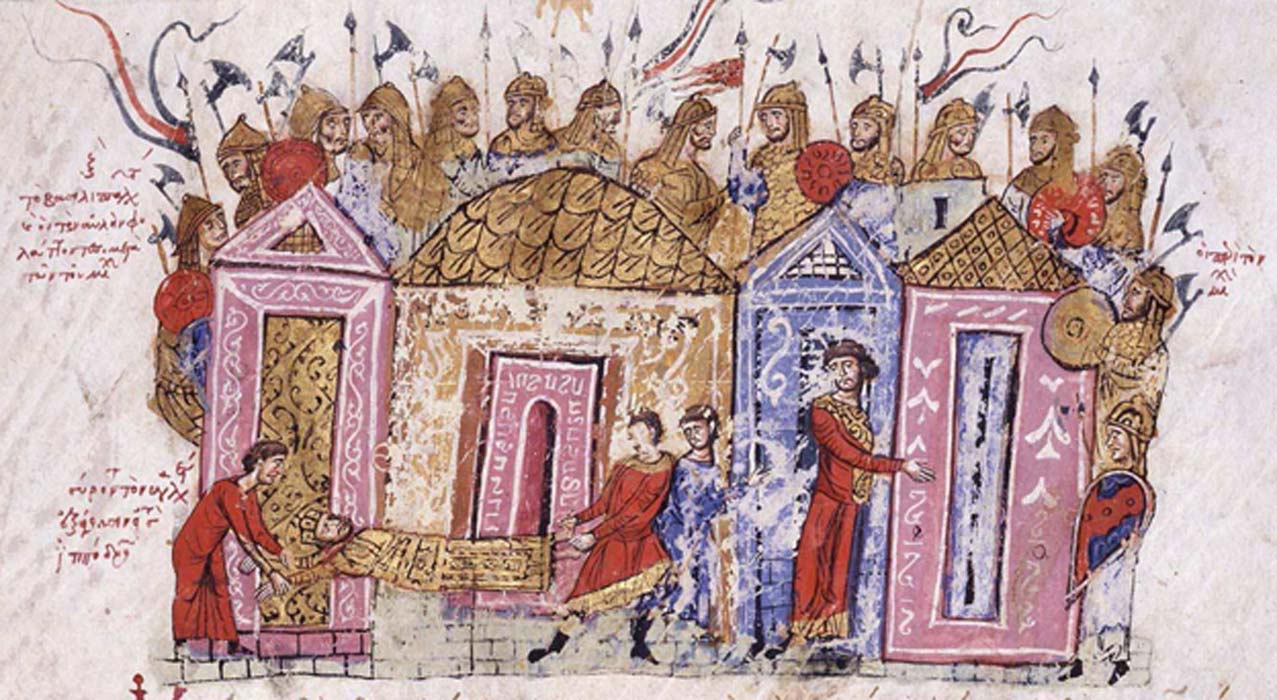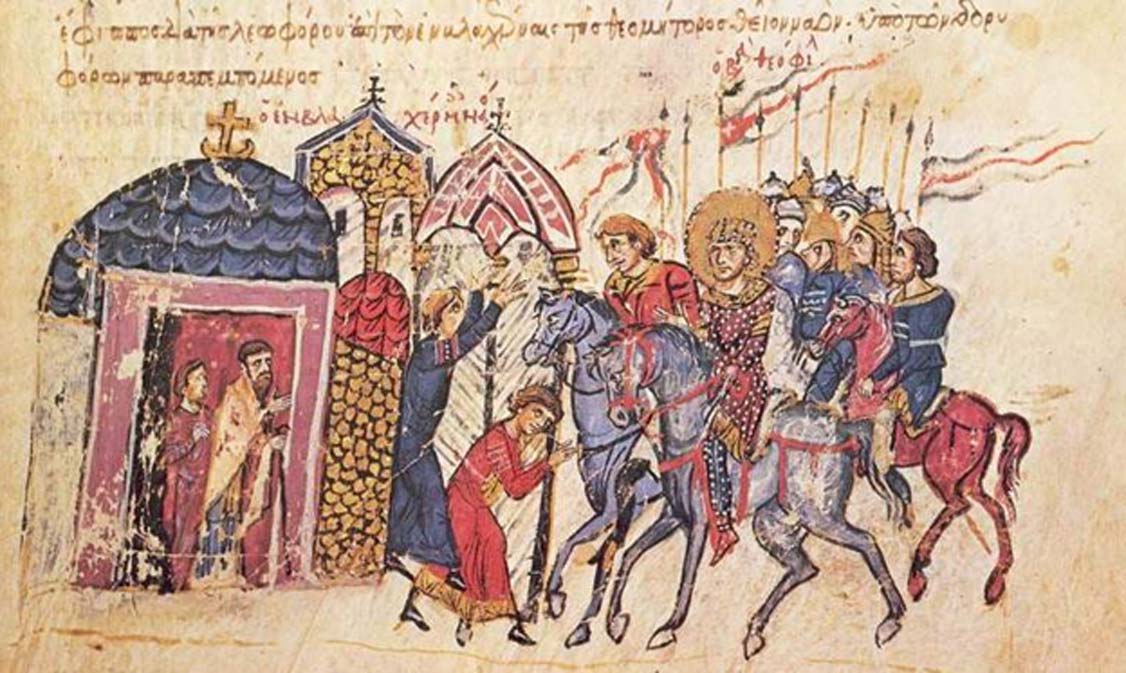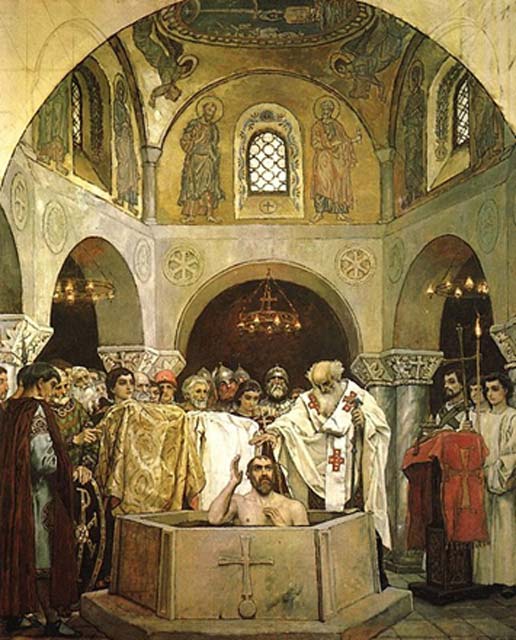
The Varangian Guard: Elite Byzantine Warrior Merchants
The Varangians were an elite guard that once served as the personal bodyguards of Byzantine emperors. When not protecting the emperor, they served at the frontlines in times of war to protect and expand the borders of the Byzantine Empire. But who were these Varangians, where did they come from, and when were they established? The earliest recorders pertaining to presence of Norse warriors at the imperial court at Constantinople, came about during the reign of Emperor Theophilus (829 – 842 AD). The city of Cherson in the North Sea region found itself threatened by Norsemen and implored the Byzantine Empire to send reinforcements to defend it. The Norse chieftains decided to accept peace and to form alliances with the imperial Byzantine court, for the Norsemen grasped the commercial and military enterprise of such a relationship. However, that relationship would not become viable until 874 AD.

Byzantine emperor Theophilus (829 - 842 AD), on horseback. Chronicle of John Skylitzes 13th Century (Public Domain)
Origins of the Varangians
The Varangians were originally Swedish merchants who entered eastern Russia. The name Varangian, which is disputed, comes from the Russian Varyag or the Greek Varangoi in Byzantine sources. The meaning of the word pertains to ‘member of a sworn brotherhood,’ and its origins are believed to be Old Icelandic. As for the word Rus, or Ruotsi in Balto-Finnish, it means Sweden. However, rodr is Swedish/Old Norse, meaning a ‘crew of oarsmen.’
The 10th century Arab traveler, Ibn Fadlan, gives a brief description of the Rus: “I saw the Rus folk when they arrived on their reading mission and settled at the river Atul (Volga). Never had I seen a people of more perfect physiques. They are tall as date-palms, and reddish in color. They wear neither coat nor kaftan, but each man carried a cape which covers one half of his body, leaving one hand free. No one is ever parted from his axe, sword, and knife...”
However, the word and meaning of Varangian comes with a caveat. While at first it denotes a group of people who are originally from Scandinavia, it becomes a rather generic term. As the decades and centuries passed, the term Varangian could be applied to anyone of a non-Scandinavian origin, such as mercenaries looking to profit from the coffers of the Byzantine imperial court. Such groups of peoples, who would serve, according to Alexius Commenus in 1088, were: "Russians, Varangians, Kulpingians, English, Franks, Germans, Bulgarians, Saracens, Alans and Abasgians." But how did the Varangians come to be a part of the Byzantine court, before the influx of foreigners integrated their forces?
Russian Prince Heeds the Emperor
The seeds of the Varangians acting in the interest of the Byzantine state, were sown during the reign of Emperor Michael III (842 – 867 AD) when they served as his personal security entourage. However, in 874 AD the Kievan Rus and Constantinople signed a peace treaty, specifying that the Kievan Rus was obliged to send the Byzantines military assistance. This peace treaty opened the door for the Kievan Rus not only economically, but also on a militarily front. Furthermore, as the Kievan Rus sent Norse warriors south to Byzantium, the Kievan Rus also recruited the Norsemen for the same purposes than those of the imperial court in Constantinople.

Baptism of Saint Prince Vladimir by Viktor Vasnetsov (1848 – 1926) (Public Domain)
The establishment of the Varangian guard as a permanent security organization occurred only in 911 AD, when another peace treaty was established between Prince Oleg of Russia and Emperor Basil II of Byzantium. It was during this treaty when the hiring of Varangians became a norm among the Byzantine emperors. In some cases, the Varangians seemed to have been a minority among the troops serving in the imperial court. The reason being that Grand Prince Vladimir the Great of Kiev, had previously enlisted the Varangians to help him defeat his brother in a civil war. After Vladimir had won the battle, the Varangians held Kiev for ransom. Vladimir agreed to their demands and granted them land, but he also convinced many of them to head to Constantinople. Vladimir secretly sent messengers ahead to inform Emperor Basil II of Byzantium of their arrival and warned him to allow them in by a trickle, for if he was to allow the whole body of Varangians in, they would surely cause trouble. However, Emperor Basil II welcomed them and paid them well to suppress a revolt within his own realm. After Basil II’s victory over the pretender to the throne in 988 AD, he enlisted the 6,000 Varangians into his own private imperial bodyguard, which would serve alongside the Byzantine army. Once established, Emperor Basil II put them to good use. Instead of integrating them with the regular Byzantine army, he kept them separate and content by allowing the Varangians a larger share of the loot, for example when they attacked Anatolia and Georgia.




